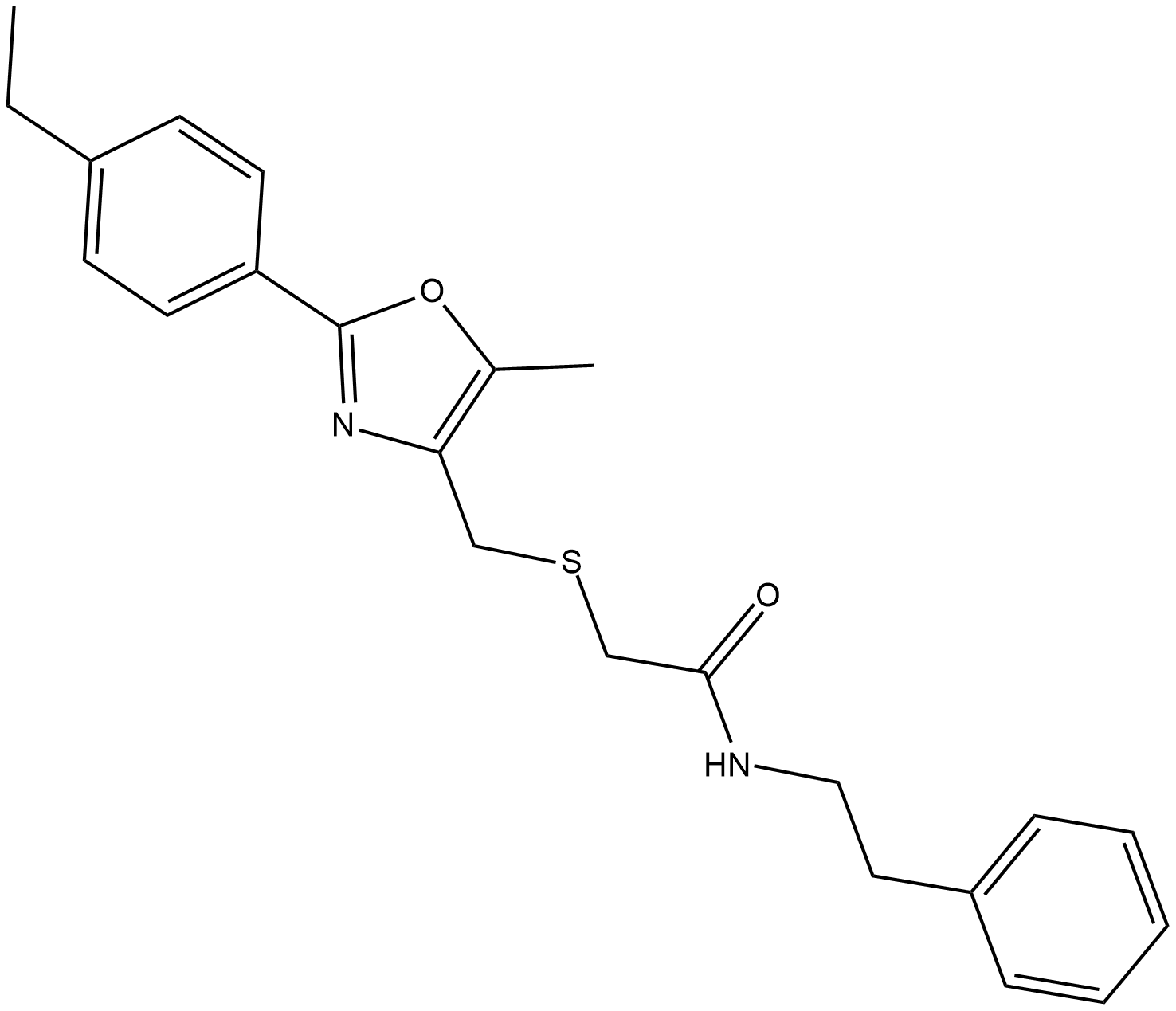iCRT3 |
| Catalog No.GC19198 |
iCRT3 is an inhibitor of both Wnt and β-catenin-responsive transcription.
Products are for research use only. Not for human use. We do not sell to patients.

Cas No.: 901751-47-1
Sample solution is provided at 25 µL, 10mM.
iCRT3 is an inhibitor of both Wnt and β-catenin-responsive transcription.
iCRT3 is an inhibitor of both Wnt and β-catenin-responsive transcription. iCRT3 significantly decreases TOP Flash activity and reduces the level of NTSR1. The anti-apoptotic effects of Neurotensin (NTS) and Wnt3a can be largely abrogated by iCRT3[1]. Cells maintained long term with iCRT3 show enhanced expression of classic pluripotency genes compare with the DMSO control, whereas expression of differentiation markers and T-cell factor (TCF) target genes is concomitantly reduced[2]. Treatment with iCRT3 at doses of 12.5, 25, 50, and 75 uM decreases TNF-α levels by 14.7%, 18.5%, 44.9% and 61.3%, respectively. With iCRT3 treatment, IκB levels are increased in a dose-dependent manner compare to the vehicle[3].
The tumor growth rates are markedly retarded by iCRT3 treatment. Consistently, the tumor-suppressive role of iCRT3 is accompanied with a reduction in Ki67 index, a proliferation marker[1]. The IL-6 levels in the 10 mg/kg iCRT3 treatment group are 82.9% lower than those in the vehicle group. IL-1β levels are undetectable in the sham but reach 371 pg/mL in septic mice and are down by 30.2% and 53.2%, respectively, with 5 and 10 mg/kg iCRT3. With iCRT3 treatment at doses of 5 and 10 mg/kg, AST levels in these septic mice are 15.4% and 44.2% lower, respectively, than those in the vehicle-treated mice. After treatment with 10 mg/kg iCRT3, lung morphology is improved with much reduced microscopic deterioration, compare to the vehicle group. The number of apoptotic cells in the lung tissues of the iCRT3-treated mice is significantly reduced by 92.7% in comparison with the vehicle group[3].
References:
[1]. Xiao H, et al. A Novel Positive Feedback Loop Between NTSR1 and Wnt/β-Catenin Contributes to Tumor Growth of Glioblastoma. Cell Physiol Biochem. 2017 Oct 24;43(5):2133-2142.
[2]. Chatterjee SS, et al. Inhibition of β-catenin-TCF1 interaction delays differentiation of mouse embryonic stem cells. J Cell Biol. 2015 Oct 12;211(1):39-51.
[3]. Sharma A, et al. Mitigation of sepsis-induced inflammatory responses and organ injury through targeting Wnt/β-catenin signaling. doi: 10.1038/s41598-017-08711-6.
Average Rating: 5 (Based on Reviews and 37 reference(s) in Google Scholar.)
GLPBIO products are for RESEARCH USE ONLY. Please make sure your review or question is research based.
Required fields are marked with *




















